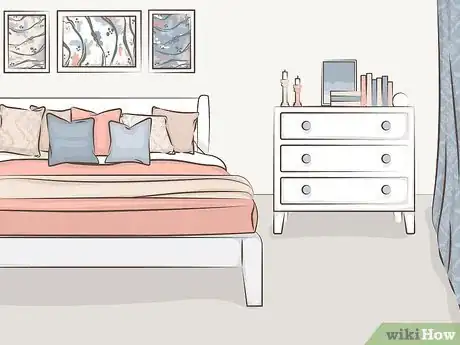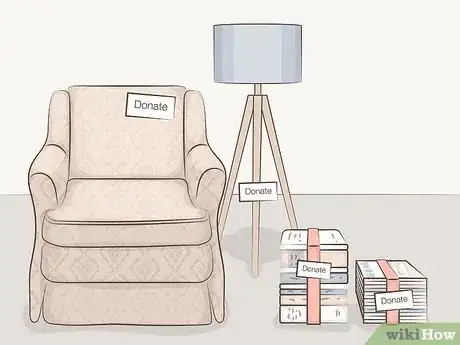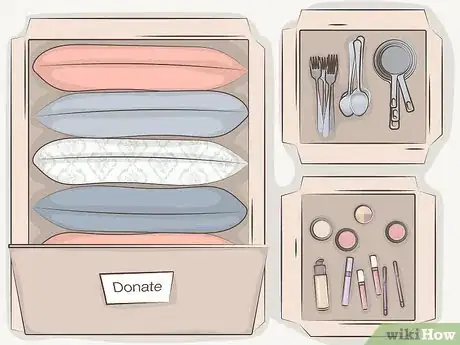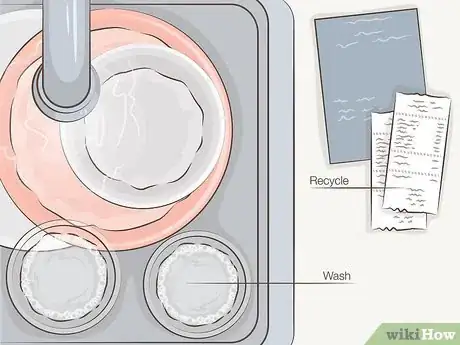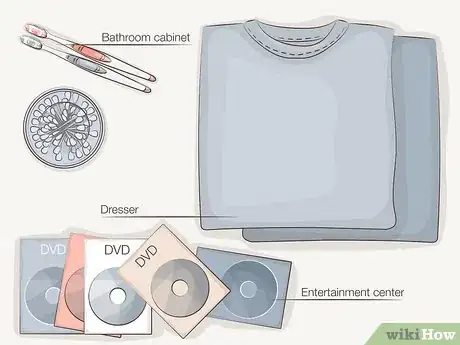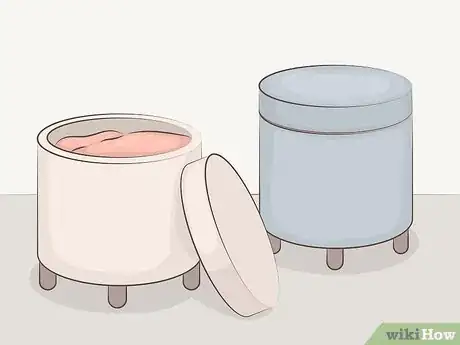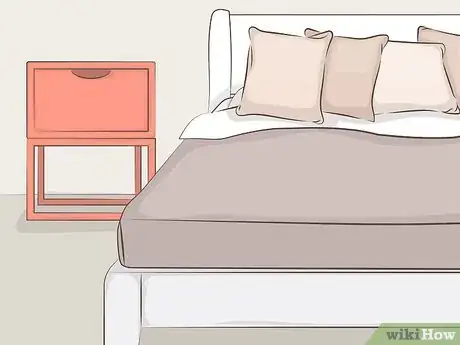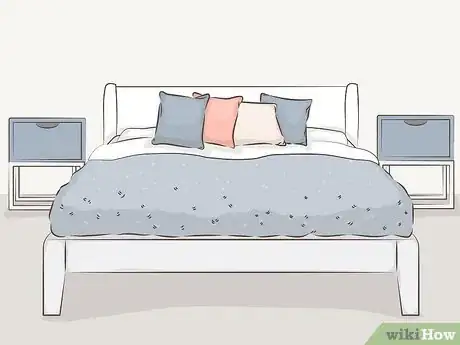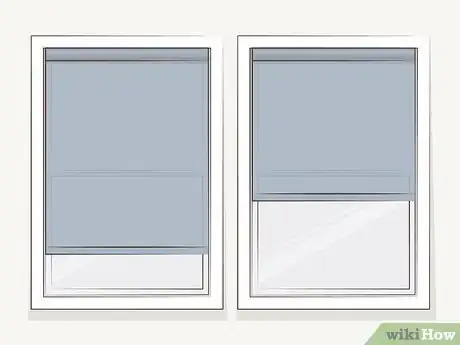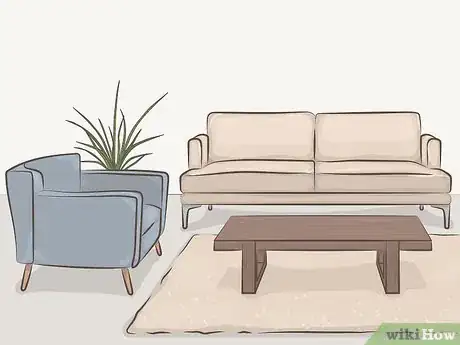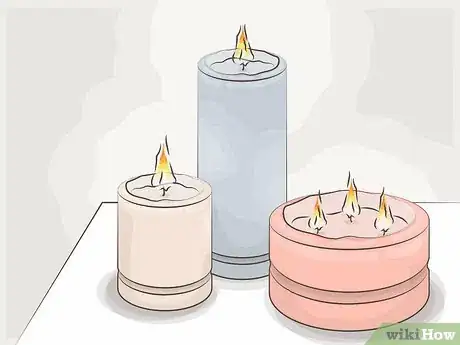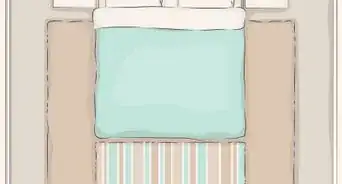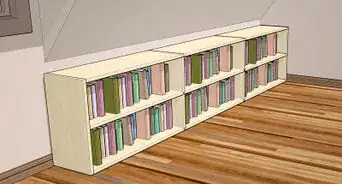This article was co-authored by Kathryn Cherne and by wikiHow staff writer, Janice Tieperman. Kathryn Cherne is an Interior Designer and the Co-Founder of Design Inside, an interior design firm in Chicago, Illinois. With over 15 years of experience, Kathryn specializes in designing, remodeling, and decorating spaces. Kathryn holds a Bachelor’s degree in Psychology from the University of Michigan and a Bachelor’s degree in Interior Design from the Harrington College of Design. Kathryn uses her background in Psychology and Interior Design to ensure her design spaces are unique, beautiful, and functional.
There are 10 references cited in this article, which can be found at the bottom of the page.
This article has been viewed 300,074 times.
Minimalism isn’t just a personal aesthetic choice—it’s a streamlined, organized, and refreshing way to reorganize your home so you’re only holding onto the essentials. If you have a lot of different odds and ends lying around your home, creating a minimalist living space might seem a bit daunting. There’s no need to worry! There are plenty of easy, stylish ways you can simplify your home, even if you’re on a budget.
Here are 14 tips for creating a minimalist home that you love.
Steps
Expert Q&A
-
QuestionHow do I make a minimalist living room?
 Kathi Burns, CPO®Kathi Burns is a board certified Professional Organizer (CPO) and Founder of Organized and Energized!, her consulting business with a mission to empower people to master their environment and personal image by assisting them in taking control, making change and organizing their lives. Kathi has over 17 years of organizing experience and her work has been featured on Better Homes and Gardens, NBC News, Good Morning America, and Entrepreneur. She has a BS in Communication from Ohio University.
Kathi Burns, CPO®Kathi Burns is a board certified Professional Organizer (CPO) and Founder of Organized and Energized!, her consulting business with a mission to empower people to master their environment and personal image by assisting them in taking control, making change and organizing their lives. Kathi has over 17 years of organizing experience and her work has been featured on Better Homes and Gardens, NBC News, Good Morning America, and Entrepreneur. She has a BS in Communication from Ohio University.
Board Certified Professional Organizer Stick to one or two styles of decor to keep things consistent. It's okay to mix styles a little bit, but for a minimalist feel, you'll want to keep the majority of your decor in one style.
Stick to one or two styles of decor to keep things consistent. It's okay to mix styles a little bit, but for a minimalist feel, you'll want to keep the majority of your decor in one style. -
QuestionI'm an 11-year-old girl and I'm trying to go minimalist, but my family are hoarders. What should I do?
 Community AnswerYou could just stick to maintaining a minimalist bedroom, but you might also try talking it over with your family. Maybe you could convince them to get rid of some stuff they don't need anymore, or at least put some things away in an attic, basement, or storage unit.
Community AnswerYou could just stick to maintaining a minimalist bedroom, but you might also try talking it over with your family. Maybe you could convince them to get rid of some stuff they don't need anymore, or at least put some things away in an attic, basement, or storage unit. -
QuestionWhat is the best color to paint a room that gets sun in the afternoon, to create a minimalist look?
 Community AnswerA nice teal does wonders. It will brighten your room even when there's no sunlight.
Community AnswerA nice teal does wonders. It will brighten your room even when there's no sunlight.
References
- ↑ https://zenhabits.net/a-guide-to-creating-a-minimalist-home/
- ↑ https://zenhabits.net/a-guide-to-creating-a-minimalist-home/
- ↑ https://dolly.com/blog/minimalist-home-room-by-room-guide/
- ↑ https://www.readersdigest.ca/home-garden/cleaning/organize-your-home-minimalist-living/
- ↑ https://www.move.org/how-to-donate-your-used-items/
- ↑ https://www.apartmenttherapy.com/5-mindful-habits-that-lead-to-a-minimalist-home-238768
- ↑ https://dolly.com/blog/minimalist-home-room-by-room-guide/
- ↑ https://www.nytimes.com/2020/04/01/technology/personaltech/digitizing-important-documents.html
- ↑ https://www.minimalismmadesimple.com/home/minimalist-apartment
- ↑ https://zenhabits.net/a-guide-to-creating-a-minimalist-home/
- ↑ https://zenhabits.net/a-guide-to-creating-a-minimalist-home/
- ↑ https://www.minimalismmadesimple.com/home/minimalist-apartment
- ↑ https://www.minimalismmadesimple.com/home/minimalist-aesthetic
- ↑ https://www.apartmenttherapy.com/warm-minimalist-decor-267437
- ↑ https://www.apartmenttherapy.com/warm-minimalist-decor-267437
- ↑ https://zenhabits.net/a-guide-to-creating-a-minimalist-home/
- ↑ https://decoholic.org/10-ways-to-make-a-minimalist-home-feel-warm-and-cozy/
- ↑ https://www.apartmenttherapy.com/warm-minimalist-decor-267437
- ↑ https://www.apartmenttherapy.com/5-mindful-habits-that-lead-to-a-minimalist-home-238768
- ↑ https://www.minimalismmadesimple.com/home/minimalist-apartment
